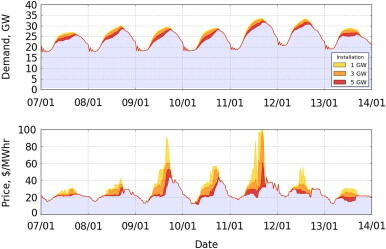Retrospective modeling of the merit-order effect

McConnell, D; Hearps, P; Eales, D; Sandiford, M ; Dunn, R; Wright, M ; Bateman, L
ENERGY POLICY, Volume: 58, Pages: 17-27, DOI: 10.1016/j.enpol.2013.01.052, Published: JUL 2013
Abstract: In electricity markets that use a merit order dispatch system, generation capacity is ranked by the price that it is bid into the market. Demand is then met by dispatching electricity according to this rank, from the lowest to.the highest bid. The last capacity dispatched sets the price received by all generation, ensuring the lowest cost provision of electricity. A consequence of this system is that significant deployments of low marginal cost electricity generators, including renewables, can reduce the spot price of electricity. In Australia, this prospect has been recognized in concern expressed by some coalfired generators that delivering too much renewable generation would reduce wholesale electricity prices. In this analysis we calculate the likely reduction of wholesale prices through this merit order effect on the Australian National Electricity Market. We calculate that for 5 GW of capacity, comparable to the present per capita installation of photovoltaics in Germany, the reduction in wholesale prices would have been worth in excess of A$1.8 billion over 2009 and 2010, all other factors being equal. We explore the implications of our findings for feed-in tariff policies, and find that they could deliver savings to consumers, contrary to prevailing criticisms that they are a regressive form of taxation. (C) 2013 Elsevier Ltd. All rights reserved.
Link to full article: http://www.sciencedirect.com/science/article/pii/S0301421513000797